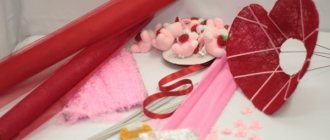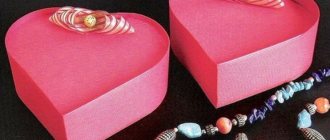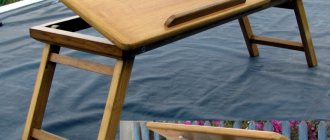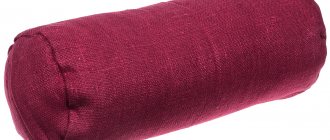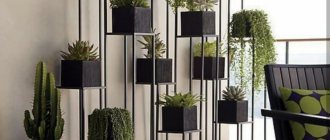Material used
Most often the stands are wooden. To make such a design, you will need special equipment. But sometimes an ordinary jigsaw is enough.
How to make a knife stand with your own hands? It's simple. Let's take a wooden board, slats of different thicknesses and glue.
Plywood stands
These stands are made in approximately the same way. Let's look at how to do the work using the example of a popular today stand in the form of a man with a shield.
The work was performed using special equipment (not always mandatory). The sizes are selected for a specific set of knives.
Materials and tools:
- plywood 19 mm thick;
- dye;
- varnish;
- primer;
- jigsaw;
- grinding machine (you can use sandpaper);
- hacksaw.
Apply the pattern from the template onto the plywood. Cut with a jigsaw. Cut a hexagon, the length of the edge is about 20 cm. Cut out the base of the stand in the form of a rectangle 17x28 cm. Draw thin rectangles for the holes according to the size of the knives. Place them evenly across the shield. Cut holes along the lines. Clean all parts.
The areas where paint will be applied to the stand need to be primed. Paint over. After marking the man's legs on the stand, drill holes. Screw the bottom part of the stand with self-tapping screws. Apply glue to the shield and the man’s hand and secure with clamps.
Related article: How to sew shorts with your own hands for a girl
Cover with varnish. The stand is ready!
A few more ideas:
We do it ourselves
So, we take a board of the required length and clean it. We will glue the slats on the sides; the thickness of the largest one should be slightly larger than the largest knife.
Now you need to attach the knives to the blank in the position they will be in the stand, placing the bars between them.
Once the distance has been determined, the blanks can be glued. Then glue the thicker blanks perpendicular to the first ones. This must be done from above, below and in the middle.
Although, if you don’t want to use glue, then all the parts can be secured with screws. Drawings for a knife stand can be found both in print and online.
A few words about the types of magnetic knife holders
If we deal with the issue of classifying magnetic holders, then after the first study of the assortment of these products, we can draw one simple conclusion - there are no varieties as such, and they can only be classified according to length and the material from which they are made.
- The length of magnetic holders can range from 300 to 600 mm - this applies to branded products. If we talk about Chinese and local fakes, they can have different lengths. When wondering how to choose a magnetic fastener for knives, this point needs to be taken into account, since it determines how many different things you can hang on it.
- Regarding the material - this point needs to be dealt with in more detail, since some properties of these products depend on this. Today, a magnetic knife holder can be made either in a metal case, or in a plastic, or in a wooden frame. The first ones, which are metal, are the strongest and they are able to withstand quite heavy objects. Plastic holders are the cheapest and, accordingly, short-lived. And wooden ones attract with their beauty, but at the same time they repel them with a weak force of attraction - such heavy products as hatchets for chopping meat will not be able to hold on to them.
Magnetic fastener for wooden knives for knives photo
It turns out that without any options, the most successful product of this type can be called a knife holder in a metal case. Unlike wooden and plastic holders, it leaves small scratches on knives, which is its only drawback.
Another simple option
You will also need a wooden board, electrical tape and glue. For seven knives you will need to cut eight identical elements. Then a couple of side curved parts.
On eight parts, make a notch whose width will be three to four millimeters wider than the largest knife. Collect everything. After this, you need to seal the grooves with electrical tape, and lubricate the edges well with glue.
Once everything is dry, remove the tape and clean the surface. Cut out the handle and attach it to the stand. Decorate as you see fit.
Magnetic knife holder: advantages and disadvantages
In order to understand what the main advantage of a magnetic knife holder is, you first need to understand the question of what it is and what it is. In principle, this is a fairly simple device - if we describe it simply, then it is a bar with magnets to which the blade of knives is attracted. If we talk in more detail about the design of this kitchen device, then it can be divided into several parts - this is an aluminum profile that serves as a housing; a pair of thick stainless steel plates are placed in it, the space between which is filled with magnets. And they, in turn, are covered with plastic decorative inserts. This may be interesting to a man, but an ordinary housewife does not need knowledge of the design features of this product. For her, the final result is more important - that is, what she gets or doesn’t get as a result of using it. Simply put, its advantages and disadvantages, which include the following points.
- The most important and undeniable advantage that a magnetic knife stand provides is the space saved on the countertop - as a rule, the magnetic holder is mounted on the wall, which many people perceive as a disadvantage. If you think that this device can be fixed to the tiles only with the help of dowels and that drilling holes is indispensable, then you are deeply mistaken - this device can be quite realistically attached using glue such as liquid nails. It holds no less securely than with self-tapping screws or dowels, and the glue itself can be easily cleaned from the tile if necessary.
Wall mounted knife holder photo - Equally important is the ease of use of knives with this method of storing them - you will not need to take them out of drawers or reach out to a special container. Thanks to this device, the knives will always be at your fingertips.
- It is difficult to overestimate the quality of the magnetic holder, such as its ventilation - although it is wrong to say so, since the knives on such a holder are in the fresh air, which prevents them from rusting and the formation of bacteria, which, as a rule, grow in a standard knife holder.
- Moreover, some people claim that the magnetic fields generated in the holder area help to some extent prevent the knives from becoming dull. I can’t confirm this, but with the purchase of this device I actually have to sharpen knives less often.
- Versatility. The magnetic strip can be used not only for knives, but also for many other kitchen appliances. With equal success, you can hang on it scissors, a ladle, a slotted spoon and many other accessories that a modern kitchen cannot do without - in fact, such a magnetic holder is quite capable of replacing a somewhat outdated roof rail.
- And, of course, the simplicity of the manufacturing process, which is easy to reproduce at home. You can see how to make a magnetic holder yourself in this video.
If we talk about the disadvantages of such devices, then nothing significant can be highlighted here - except perhaps some negative effects on the blade of a knife or other accessories. From long-term use of magnetic fasteners, small abrasions remain on the blade of knives, but they are so insignificant that you can not pay much attention to them.
Originality is also respected
An unusual stand will be a product with filler. Today, this variation for storing knives has become popular, and it is not difficult to make. Popularity, genius and originality in one simple subject.
Moreover, such a holder is also hygienic. By the way, making a stand for hunting knives with your own hands is also not a fantasy, just watch how it’s done and try to reproduce it.
How to make fillers
For such stands, plastic containers are most often used, inside of which there is silicone, graffito rubber or polypropylene.
There are no cuts or grooves here. You can stick any number of knives of different sizes into this stand. And the order doesn't matter here.
